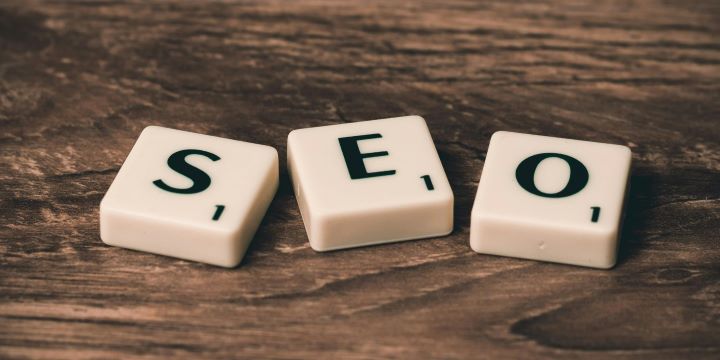SEO should be a piece of cake by putting the words associated with the industry and that’s it we are done. Wrong. SEO is an important source of traffic toward your solutions. It requires a long-term plan to be effective.
SEO should have a keywords strategy behind it. A strategy will mean how effective your website will be for the business objectives.
Also it requires a lot of experiments in the beginning. Initiatives that can produce results in the short term and compound in the future.
Without a SEO strategy you will be at the mercy of what other brands optimize their website. Also, it makes it difficult for Google to index the website when the pages don’t have a structure to follow.
There are constant changes in these popular browsers that can impact your website. So even if your website was optimized for years ago a new update could affect it now. So having knowledge of the SEO trends is crucial to keep your website performing well.
SEO still hold great importance for a business success
SEO drives 1000% more traffic than organic social media (Spark Toro). For every page with SEO it takes thousands of posts from social media to get that lead to the website. This can make sense when social media platforms try to keep their users invested in their apps.
SEO You can make better your owned digital assets. These are influenced by Google Algorithms. With your own website you have more control of the content the visitor sees.
60% of marketers say that inbound (SEO, Blog content, etc) is their highest quality source of leads (Hubspot). Meaning that is a great way to get potential clients to start noticing your brand for their unique needs.
SEO leads have a 14.6% close rate (Hubspot). As the content can help users learn more of the solution and trust the expertise of the business. In perspective from 1000 leads 146 en up converting.
How to put together a good SEO strategy and rank high in Google SERPs?
Make a Digital Overview
To carry out the strategy you have to know where everything starts from. How the current presence of the business is working. This includes website, Social Networks, Long Content Platforms such as YouTube and Podcast.
Identify what types of topics are related to the brand and its products. What are the products that people buy the most and why?
This helps us create a clear picture of the business model and the people who benefit. Also why lines can be drawn when researching relevant terms with the industry.
Business Objectives
Now we have to establish the clear goal for the SEO strategy. This will generally get more quality leads to the website. This used to be getting more people to the website regardless the profile. That goal can be vague and get a lot of people that will not convert as a customer.
KPIs and Metrics
Start with a few numbers to track the success of a SEO strategy. Then as the implementations mature you can look at other data for decisions. Choose 3 -5 to start with.
These are some metrics to track
Organic Traffic – Getting more people to land in your website.
Quality Leads – When people fill the forms for the service that they sustain the service budget.
Conversions – increase in the conversions from the quality leads that come through the website.
Because it gives us clarity in the concrete strategies to get results. It benefits us when it comes to prioritizing tasks related to the strategy. Selecting a correct buyer persona
Having the ideal persona will determine your main offer for them. Helps you make the main offer as attractive as possible. This persona is usually the one that will invest the most and need less persuasion to convert.
SEO specialists should consider what this persona interests to get the right keywords. So you can explain how your service helps them.
Your ideal persona is not the only person that will convert to your website. There are other personas in different industries or stages that could convert. Make sure to have a side offer that appeals to the needs of secondary buyers.
When having a persona for the SEO strategy you can have clarity when writing the website copy. This can influence their buying decision. Putting in the perspective that the better informed. This leads to the less effort it will need to convert. This can happen because the idea came from them not from you pushing a service they did not think of.
Another persona that you can make is a negative persona. This is a persona that you are aware that could enter the website but will not buy. Generally is not as detailed.
Analyze the Competitors
A great way to get a head start and define your own strategy is to look at what the competitors are doing right now. See which keywords they are trying to rank for. What is their general structure?
Think competitors might also have SEO specialists getting their pages ranking higher. That means getting potential clients that could be landing on your website. They might be positioning for many keywords but not having them well optimized.
That’s when you should take some keywords they have but are still interesting to rank for in your pages. Outline the keywords that through the website and blog content.
Usage of SEO Tools
With these tools you can get insight into what words are being searched for when buying a product. SEO specific tools like Ashrefs and Semrush can get you keywords information. This high value keywords will make the foundation for the webpage structure.
Google Ads Keyword Planner. It can also be a good tool since it provides data straight from its own source.
There are other tools that can give you hints of how your current page structure is being optimized. Like Page Insights, it gives you factors on the page speed so that you make adjustments.
(GA, Search Console, Keyword Research, Analiza competencia, Contenidos – Topic Clusters.
Mobile Focus
Mobile uses growths year after year. From shopping for things, to entertainment like music, videos and movies. This is due to the convenience that is shopping from the phone.
It’s true that you have to wait some time but the availability and variance in products to choose from can compete. Your website whether it is a product or service should cater to this kind of consumer behavior.
56% of consumers are using digital wallets such as Apple Pay, Pay Pal and Samsung Pay.
There is a steady increase in mobile shopping because of the easy access to phone and internet.
Still there are barriers to mobile shopping
Size of the buttons and links are too small
There are security concerns, like people stealing personal data.
Difficulty finding what they were looking for
This means an increase in mobile use to further inform themselves of products they will buy. They can be gathering information through text and videos that influence their decisions.
This means the SEO must be optimized for the mobile usage. To determine which keywords are being looked at in mobile devices instead of desktop. Usually the search terms in phones are going to be shorter.
Now we should consider the voice search due to the updates in the tool. Voice search is being sed by 50% of adults in their mobile phones (Statista). It usually results in a short phrase answer but can explain products details or features.

SEO Task | Key Word Research
First thing do after a SEO strategy is doing a keyword research. This means collecting different relevant keywords that might work for the website SEO.
Keyword research will give you a collection of keywords that are not relevant to the brand. But that doesn’t mean competitive to rank for.
Looking at what the top metrics of the keywords like volume, keyword difficulty and other. You then have to filter the list until you have a short list of 10-15 keywords to rank for. Next you can organize these keywords throughout the website and articles.
Important note: No two page in your website can compete for the same keyword. People might think that by having a bunch of pages with the same keyword that is going to generate more traffic. That is incorrect.
Google is going to see both pages and ignore both and not index them either. Why because it can be taken as a SPAM. Content that is being repeated to have more pages for people to fall to without unique value.
Keyword Clusters
Next the keyword research you will have a couple of keywords to rank for. You will want to organize the keywords in the website with a logical structure.
Some of the keywords the most relevant to your business must be in the main static pages of the website. These include such as home, services, product and about me pages. Remember these pages will hold authority in the digital space and are at a limited amount of pages.
Then with the blog you can have content that can target other keywords. These blogs you not be random ideas of keywords they should connect with each other. while not competing for the same keywords.
These means organizing relevant keywords to a section of the specific blog articles. Example “Soccer Cleats”, “Soccer Shoes”, “Football Gear”. Are similar but then you have “Soccer balls”, “Football Ball” that has to be in another page altogether.
So you can have a main topic of Sports. Soccer connects with a specific page of “Soccer Tips” “Soccer Cleats” and “Soccer Balls”. Each of these pages has their own specific keywords to rank for.
What is SEO on Page?
In the SEO Strategy you must always have a structure for the On-Page Elements. At least a checklist that you follow to make sure the page is well optimized.
These elements you can move them to a template page to make it easier to remember every time you create a new page.
These are the basics things that should have keywords in them for the crawlers to crawl the page and index it.
Structure of the Content
Titles: The titles in the SERPs should have the keyword in the beginning and this title. Also, titles seen on the SERPs should have up to 60 characters. Why not more because it gets hidden with the three dots at the end.
Headings1,2…more – Headings like the H1 must have the keywords for the rest of the H2 and H3. You can always alternate which keywords to use on them, leaving some without keywords. If all the headings have the same keyword it does not improve any ranking.
Plus having the same keyword in every heading doesn’t look good for the visitor experience.
It will seem like a SPAM website which means that he could not trust the content in it.
URL: The URL slug is another important place to have the keyword. Another good practice here is not having too much words in it aside from the Slug.
Example: Domain.com/buy-your-soccer-cleats-today-as-a-discount/
Short and with the keyword – Domain.com/soccer-cleats/
Meta Description: The meta description does not influence the SEO for the crawlers. But it does influence the click through to the page. As the copy must be inviting and stating clarity what the page is about.
If you don’t write anything here it will take copy straight from the first text in the page. That might not always work well.
First Paragraph: The first paragraph holds the important job on his own. To be the hook for the visitor to read the rest of the page. But for SEO purposes it should contain the keyword in there.
This is for Google to keep finding relevancy in the rest of the structure to go with the keyword.
What is Off-Page SEO?
Off Page is making connections of other sites with links that drive traffic to your website. Example from this is having a blog that mentions your brand in a review. But not only mentions the page having a direct link to your website.
If the visitor finds that website trustworthy than that trust will be attributed to you. For creating quality content that other sites might link to.
Why would people do send people from their site to other sites? It doesn’t make send all On-Page SEO is getting people to your site.
Well this is because they might want to keep adding value to their own visitors. Then they is their visitors would need something very specific from a voice of authority. Then they would send that visitor to an expert site that knows more of that topic.
Other things that get lots of Off-Page links are website tools. Like a specific calculator, AI generator, templates or resources that are relevant.
Link Building
Link building is the process of getting inbound links from other websites. This means prospecting an interesting authority website with rich content. Then reaching out to send them to your inquiry of a followed connection.
Also you could find a website that mentions your company in the blogs to apply a link back to your website.
We are always in the hunt for follow-links, as it establishes a stronger authority.
A unfollow link does not carry the same weight to build your digital authority.
Technical SEO
Technical SEO is all about managing the page performance and speed. This means working on anything that appears on the page so that it does not make it slow to load. Slow loading pages are often ignored from people.
Yes internet connections are a factor but the page must be quick to load. But you have to assume that the page must load with a slow internet speed.
Here there are the visual elements and behind the scenes website structure. These elements can make a page load faster or slower. Anything from videos, images, graphics and animations to name a few.
With images we want to keep them under 100kbs of file size. You can reduce the size of the image from an original form to around 1200p.
Example: if you take a photo of a product in a digital camera the size could be 4000×4000 in size. You can reduce that size to 1200x1200p high definition. With only this you take a chunk of the memory storage.
Other things are page fancy animations the best practice is less is more. Insert animation on the crucial parts that you want people to pay attention to. People’s gaze goes to moving things first. If there is to much animation they will not know what is important to focus on.
Things like buttons, a specific image of the website, A gif showing the app in action.
Focus on creating only one video per page and it has to be the one that sells the product by itself. For videos keep it short highest quality possible and that it shows the product in action. If it is a service, then show testimonials or the after the service experience.
Many other things affect the technical SEO. For more information on this topic wait for a upcoming technical SEO post.
How to select a SEO Freelancer for your Business?
SEO is a marketing strategy that requires effort to put in place. You might think that you can do it all by yourself. The reality is that SEO requires constant adjustments to get the best results.
SEO is a task that you can delegate to an expert. This way you can free precious time you could be using to improve other areas of the business.
Also there can be mistakes that happen early in the SEO strategy. These mistakes can be rendering the performance poor for the years to come. Imagine not having optimize something in the website 5 years. That could mean X amount of traffic X amount of leads X amount of money that could have generated.
A right SEO specialist can identify those details early on the website life-cycle. Then build upon that for it to compound for the future.
SEO goes hand in hand with the content strategy that provides value. SEO specialists will brainstorm and write a compelling narrative behind a solution.
If you are thinking of hiring an SEO specialist. Then consider their experience, expertise and the industry they have worked in. A great quality that many share is their ability to adapt to the trends. SEO techniques to many impact different industry sectors in many ways.
You don’t have to do a year-long SEO service with a specialist. You can do a test of 6 months. To get the feeling of what it is like working with him until you can choose a longer contract.
Conclusion
A SEO Strategy will clarify your website keywords structure to rank for the right terms. While keeping the website crystal clear for Google to crawl.
Find relevant keywords to the business objectives
Make a structure of keywords for the website and Google to crawl
Place the keywords to make it relevant with the content





